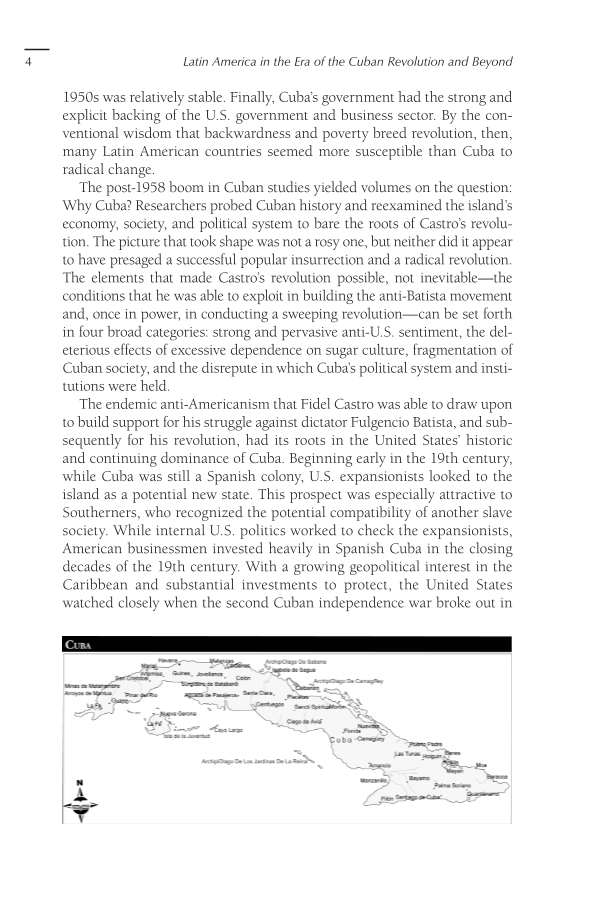4 Latin America in the Era of the Cuban Revolution and Beyond
1950s was relatively stable. Finally, Cuba’s government had the strong and
explicit backing of the U.S. government and business sector. By the con-
ventional wisdom that backwardness and poverty breed revolution, then,
many Latin American countries seemed more susceptible than Cuba to
radical change.
The post-1958 boom in Cuban studies yielded volumes on the question:
Why Cuba? Researchers probed Cuban history and reexamined the island’s
economy, society, and political system to bare the roots of Castro’s revolu-
tion. The picture that took shape was not a rosy one, but neither did it appear
to have presaged a successful popular insurrection and a radical revolution.
The elements that made Castro’s revolution pos si ble, not inevitable—the
conditions that he was able to exploit in building the anti-Batista movement
and, once in power, in conducting a sweeping revolution—can be set forth
in four broad categories: strong and pervasive anti-U.S. sentiment, the del-
eterious effects of excessive dependence on sugar culture, fragmentation of
Cuban society, and the disrepute in which Cuba’s political system and insti-
tutions were held.
The endemic anti-Americanism that Fidel Castro was able to draw upon
to build support for his struggle against dictator Fulgencio Batista, and sub-
sequently for his revolution, had its roots in the United States’ historic
and continuing dominance of Cuba. Beginning early in the 19th century,
while Cuba was still a Spanish colony, U.S. expansionists looked to the
island as a potential new state. This prospect was especially attractive to
Southerners, who recognized the potential compatibility of another slave
society. While internal U.S. politics worked to check the expansionists,
American businessmen invested heavily in Spanish Cuba in the closing
decades of the 19th century. With a growing geopolitical interest in the
Caribbean and substantial investments to protect, the United States
watched closely when the second Cuban independence war broke out in

























































































































































































































































































































